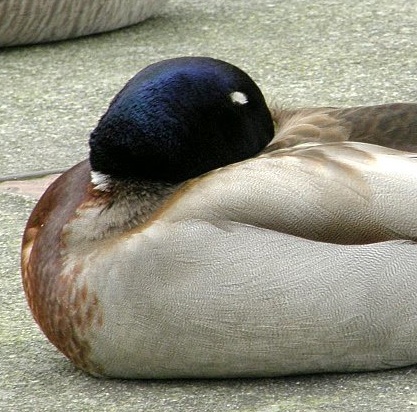A recent study has found that the contrasting eye colour and eyelids of some wildfowl has a defined function.
I am frequently asked about the colour of birds’ eyes. Does it affect vision and if so in what way?
The answer is always rather disappointing to the questioner. Since eye colour results from the pigment structure on the outer surface of the iris (which controls pupil size) it cannot, of itself, play a part in vision. Whatever the colour of the iris it is only an opaque structure which controls the amount of light reaching the retina; acting just like the diaphragm of a camera lens. Would it really be expected that there would be any difference in our photo if your camera had a yellow or red lens diaphragm compared with the usual black?
But eye/iris colour does vary quite markedly across bird species and in other animals. Given that we usually look for correlations and functional relationships when we see variation, it is certainly worth asking why does eye colour vary? The answer always put forward is that eye colour must have a signalling function; that it is simply just another aspect of the non-plumage external appearance of a bird, like the skin around the eye, the colour of the bill or the cere. But these are known to have a signalling function so it seems reasonable that eye colour also has a signalling function. Just what it might signal is, however, less clear. However, we are now a significant step forward in understanding the signalling function of eye colour, at least in ducks, thanks to the study of Matt Guillemain and colleagues published this month in Ibis (Guillemain et al. 2012).
What they have shown is that while there is a wide range of eye colour among duck species, the colour usually contrasts strongly either with eyelid colour or plumage colour around the eye. Basically most duck species with dark irises have pale eyelids, and ducks with light irises have dark eye lids.
So what is the function of these contrast? Guillemain and colleagues hypothesise that the contrast between eye colour and eyelid is an unambiguous and reliable signal of whether a duck has it eyes open. This could be dismissed as a trivial observation except that for many ducks vigilance, as in many other birds, is a key to their survival. The key things about ducks is that most species are also highly social, at least for some part of their life cycle, and knowing whether your neighbour has its eyes open is very useful, since an individual will know whether it needs to be vigilant for predators or whether they can get on with their own self maintenance or feeding in relative safety.
This is a great example of good science. A neat hypothesis investigated by clear and simple observations conducted in a structured way based upon a clear and logical set of interspecific comparisons.
So, look carefully at ducks, even sleeping ones, and you can learn a lot. Perhaps there are plenty of other bird species in which a simple relationship between iris and eyelid colour has been overlooked? Parrots come to mind, but are their others? Ideas please? And what about other signalling functions of a highly contrasting iris. Can they indicate emotional state? Are they necessary for those birds, such as some corvids, which have been shown to follow the direction of gaze of others?
Reference
Guillemain, M., Fouques, C. & Figuerola, J. 2012. Consistent contrast between eyelid and iris brightness supports a role for vigilance signalling in ducks. Ibis 154: 461-467.
Image credit: © Susannah Anderson | Wanderin’ Weeta
Blog with #theBOUblog
If you want to write about your research in #theBOUblog, then please see here.





